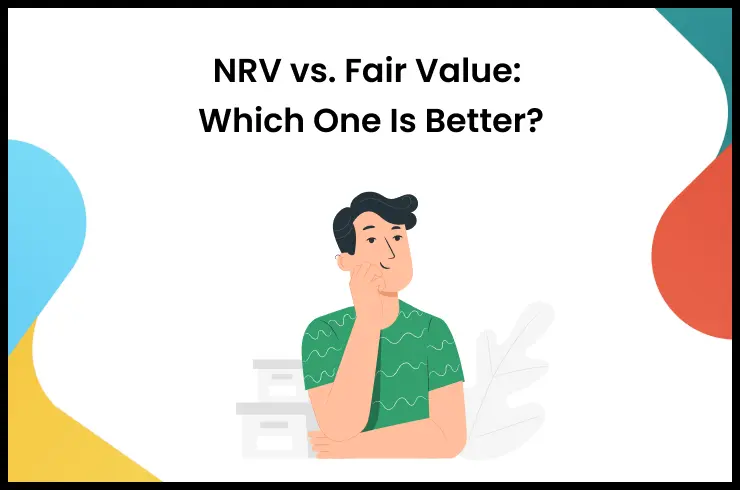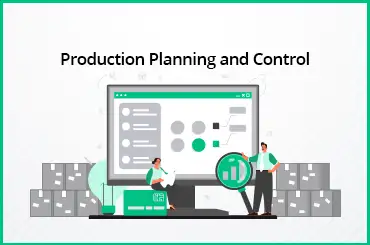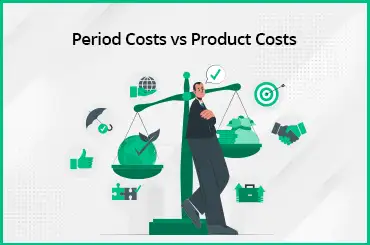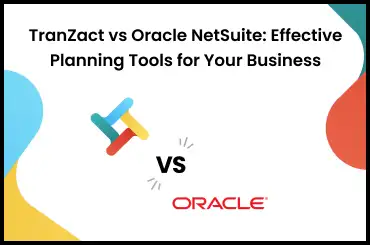The parameter of break-even analysis is critical when a business owner aims to make profits and plans to sustain profitability. This useful metric or tool reveals the number of sales your company needs to do to cover your expenses. This is the point when the business is in a no-profit-no-loss situation. This article explains break-even analysis, how break-even analysis works, when to use it, how to calculate it, and more.
What Is Break-Even Analysis?
The break-even point is the minimum level of sales required to blanket up all the expenses and costs incurred by any business. This can be determined by one of the modern financial tools available popularly known as a break-even analysis.
To understand why the term came about we need to realize that this is a tool that will help you as an owner to calculate the point at which your total revenue is equal to your total expenses. In other words, it helps you to break even in your business to ensure no loss. It needs to be emphasized that at the break-even point, you are not at a profitable stage either. However, your business profitability begins from that point.
So, as a business owner, the importance of break-even analysis is immense. Further, it helps to take better decisions regarding the pricing, level of production, and overall management of finances.
How Does Break-Even Analysis Work?
The break-even analysis formula helps you to determine the production and targeted sales or a mix of both. To do a break-even analysis, you need to first calculate the break-even point (BEP). But how is that done? It is simple. It is estimated by dividing the total fixed costs of production by the price per unit minus the variable costs of production.
Fixed costs are the costs that are always fixed when production or procurement of goods is done, such as rent and workers' salaries. Variable costs include costs that keep on changing or varying, such as the cost of raw materials and the cost of labor. So, break-even analysis is a walkthrough of all your costs that contribute to the profit earned from each unit produced and sold by your company. So, if a company has a low fixed cost, it will naturally have lower break-even points of sale provided the variable cost is not more than revenue.
What Is the Contribution Margin?
If you run your business, you must be aware that there is a difference between the selling price of your product and the absolute costs involved in its production. That is your contribution margin. But the difference has to be more than zero here. For instance, when you sell a table for Rs. 200 and your cost of production is Rs. 150, then the contribution margin is Rs. 50.
Importance of break-even Analysis
Here is a list of important reasons why you should conduct a break-even analysis of your business:
- Break-even analysis helps to get a better perspective and understand the cost structure of the product. This ultimately enables you to decide the pricing that is in accordance with the market to make it more reachable and affordable. This results in increased sales due to reasonable profit margins.
- Decision-making at the management level becomes relatively easier with break-even analysis.
- It is noteworthy because it tells you where you can cut down on unnecessary expenses to increase profits.
- It helps the business know how far it has achieved its goals.
What Is Standard Break-Even Time Period?
The standard break-even time period of any business is anywhere between 6 and 18 months. But why is this time period important? It is important because if your business takes longer than this time period, it means you need to re-evaluate the entire procedure based on your calculations and make changes in your plans if required. If it is anything more than 18 months, it signals a crisis for your business, so treat that as your risk indicator gone off.
When to Use Break-Even Analysis?
There is no specific time to use break-even analysis. It can be implemented at any stage of the business. As soon as there is a slight change in the business, such as when there is a merger, acquisition, addition of location or employee, or a new start, it should immediately be used. To be more accurate, it can be used in any of the under-mentioned situations.
Know About Profitability
The biggest benefit of break-even analysis is that it acts as a reality check on the business. It helps the owner or the management level understand how long it will take for the investment to become profitable. It can help the owner to understand the minimum sales required in the existing location, new location or to enter a new market.
Cost Reduction
A break-even analysis helps business owners to identify areas where they can reduce costs to improve profitability. It helps to know the contribution margin of each product or service that can be used to cover the fixed costs and make a profit. Also, contribution margin helps businesses to identify their most profitable products and boost their sales, and do away with slow-moving inventory and dead stock. One can also identify the variable costs that can be avoided without affecting quality. So, this metric is a great way to make informed decisions to reduce costs and enhance profits.
Pricing Strategy
The break-even point serves as a benchmark for pricing products or services. By setting prices above the break-even point, businesses can generate a profit, while prices below the break-even point will result in losses. Pricing strategy is fundamental for any business to sustain itself in the market. There come situations when you need to lower the price of certain products to beat all your rivals. However, if you lower it more than the break-even point, you will suffer losses. So, first, try and reduce costs to lower the break-even point and pricing.
Easy Decision Making
Break-even analysis helps you to understand the right track on which your business must tread especially if you are launching a new product or if you are a start-up. Also, it narrows down the complications and possibilities in front of you in case you want to expand your business.
How to Calculate Break-Even Point?
To calculate the breakeven point, you will need to understand certain calculations and values. Alternatively, you can leverage enterprise resource planning (ERP) software with an accounting module or any accounting software. These will accurately calculate the BEP for you which is extremely necessary for your business to flourish.
Break-Even Analysis Formula
The break-even analysis formula is easy to understand. Here is the formula for you at a glance:
Break-even quantity = Fixed Costs / (Sales Price Per Unit - Variable Costs Per Unit)
Break-Even Analysis Example
Take a look at the example given below to get an insight into what break-even analysis looks like. Say you plan to manufacture small handbags and sell them for INR 500. So, while calculating your total cost you will just not only include the raw materials cost (INR 200) but also other costs like the cost of transporting (INR 80), packaging (INR 20), marketing (INR 100), and all other related costs (INR 100). When you add up the total you will get a clear picture of what your handbag costs.
So, to stay profitable in the market, you need to raise the price suitably. After calculating all costs that go into the making of your handbag you can increase it based on market trends, say to INR 750, which will help you to bring up your contribution margin to INR 250.
Uses of Break-Even Analysis
There are many advantages of break-even analysis and thus its uses are also numerous. The uses are enlisted below for your perusal:
- It aids you in predetermining your selling price which makes sure you are at a profit.
- It gives you a fixation of sales volumes to get the desired return on the capital that you pump into your business.
- With it you can predict the costs and profits should there be any volume change.
- If you want a shift in the sales mix, then you get a suggestion from it.
- No matter which level you are in your output, you will always be able to determine the costs and the revenue.
- Decision-making becomes easy; you can forecast better and plan long-term to maintain the profitability of your business.
- The strengths and profits of your business are disclosed to you without much effort which again boosts the profitability of your business further.
Limitations of Break-Even Analysis
Along with advantages, there are some limitations to break-even analysis. So do read the below section:
- Break-even analysis gives you the hypothesis that you can clearly segregate all costs into fixed and variable categories. Practically speaking it is not possible.
- No matter which stage you are in your business, it is believed that break-even analysis assumes that fixed costs are a constant factor. On the contrary, even fixed costs sometimes tend to vary.
- Variable costs are assumed to vary as per the trends of the volume of your output. That is true but it is not essentially directly proportional.
- Break-even analysis presumes that the selling price is unchanged and so it gives a straight revenue. But in reality, the selling price is dependent on certain factors like market demand, supply, and competition. Thus, it is not a constant factor.
- Distributing fixed costs over a variety of products only adds to the confusion.
- This value assumes that business conditions are always the same and that is incorrect.
- It focuses on equal production and sales quantities, and there are no changes in the closing and opening stock. However, it is otherwise.
- Break-even analysis does not consider the capital pumped into the business, which is an important determining factor of profitability.
How to Lower Break-Even Point?
With a break-even analysis, you will surely be able to understand how many units you need to sell to become profitable in the market. If selling an 'X' number as per the break-even point seems a daunting task, then you need to look for ways to lower your break-even point. Let's see how to do it.
- Reduce the fixed costs which will ensure that you need not sell a huge number of units which may not always be possible. Say for instance, if you cannot sell much retailing then also try online selling alongside retailing.
- Make a reasonable raise in the selling prices after considering the market expectations and willingness to pay more.
- Cut down variable costs. For example, look for ways to reduce packaging costs as that would help you to save a lot.
Streamline Assessment of Break-Even Point
Break-even analysis is an important tool that helps to boost your business and take it on the right track. It has immense potential to boost your business especially if it is new or you are launching a new product or entering a new market. TranZact automates core business functions and provides you with useful insights to assist you in the easy evaluation of the break-even point. This helps you to plan your sales and production processes and scale revenues!
FAQs on Break Even Analysis
1. What are the components of break-even analysis?
The components of break-even analysis are fixed costs, variable costs, and price per unit. Using these components, this analysis helps businesses to determine the minimum level of sales needed to cover all their costs and avoid losses.
2. How do businesses use a break-even point in break-even analysis?
In break-even analysis, the breakeven point is used to make decisions regarding pricing, sales forecasting, growth strategies, and cost management. Businesses will also know the exact minimum price that they should charge to flourish in the market.















